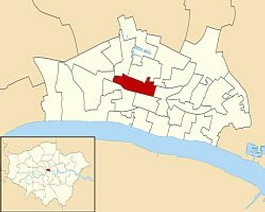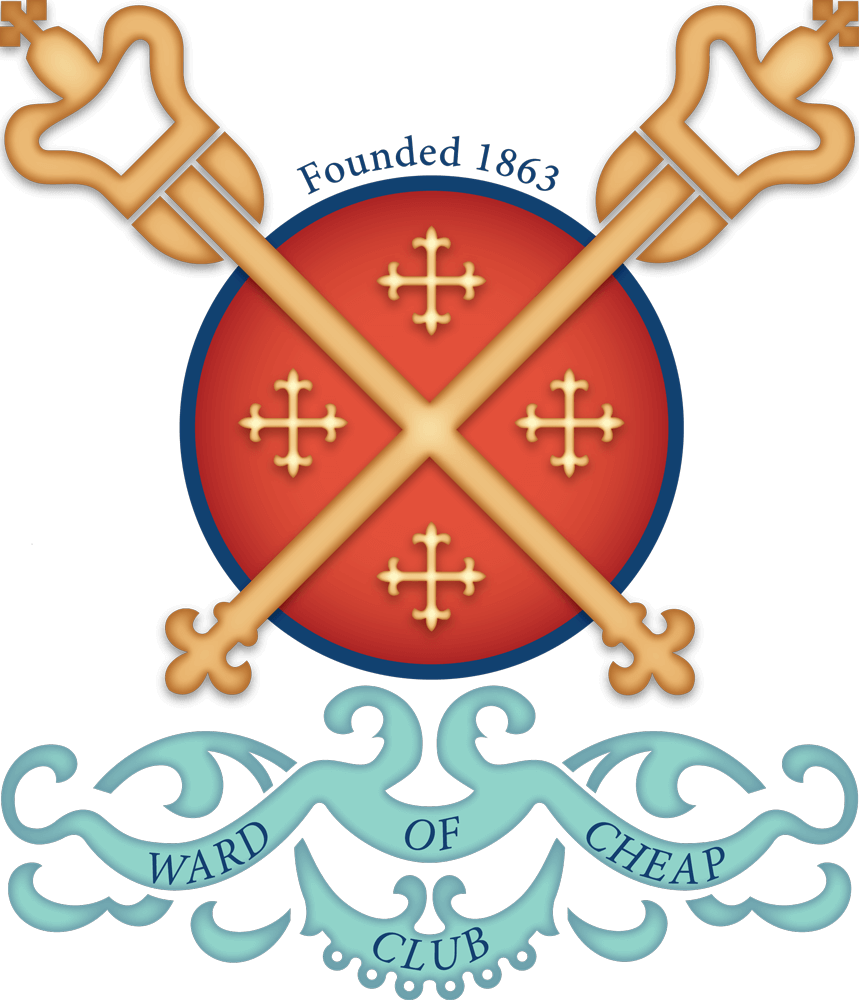
The Ward of Cheap is one of the 25 Wards that make up the City of London.

It takes its name from the medieval market held in the Ward (“Cheap” being the old English word for “market”).
It is situated in the very heart of the City, containing within its boundaries a small part of the Guildhall buildings (the main entrance and the main hall itself) and the approaches to Guildhall, two churches, the Corporation Church of St Lawrence Jewry and the Church of St Vedast alias Foster, and the Livery Halls of the Mercers, Goldsmiths, Wax Chandlers, and Saddlers Companies. Among its famous sons it numbers Thomas á Becket and Sir Thomas More, both of whom were born in the Ward.
Although subjected to boundary changes over the centuries, throughout the City’s history the Ward has lain on the great East-West route connecting the Tower, symbol of Royal power, with the Guildhall, the seat of civic government, and St Paul’s Cathedral, the City’s oldest place of worship. The area covered by the Ward, and its current boundaries, can be seen on the following map of the Ward
The City’s Wards were established in medieval times for the purpose of government and today they participate in the governance of the City through the election of the City’s Aldermen and Common Councilmen. Each Ward is represented on the Court of Aldermen and the Court of Common Council by one Alderman and a number of Common Councilmen (the number ranging between two and ten, depending on the size of the Ward). One of the Common Councilmen will be designated his Deputy by the Ward’s Alderman. Currently the Ward of Cheap is represented by three Common Councilmen. Candidates, men or women, must be Freemen of the City and on the electoral roll of the City of London. Common Council members are also known as Common Councilmen.
Wardmotes take place annually, on the second Friday in March, chaired by the Ward’s Alderman, and outside election years they allow voters to meet their elected representatives and raise concerns and ask questions of them. The elected members also give an update to voters regarding the work they have undertaken during the previous year and on issues affecting the City in general and the Ward in particular.
Aldermen and Common Councilmen are elected by the electors of the Ward who are registered to vote on the Ward List. Registration occurs annually when forms are sent to all residents and businesses in the Ward. Since 2013 elections for Common Councilmen are held every four years on either the third Wednesday in March, or the fourth Wednesday in March, although in certain rare circumstances ordinary elections will instead be held on another date to be determined by the Town Clerk in consultation with the Lord Mayor. The last ordinary election was held on Thursday 24 March 2022. Alderman, also elected by the voters, are appointed for a six year term.
A short history of the Ward of Cheap, written by Hermione Hobhouse, was published in 1963. It traces the Ward’s history, from mediaeval times to the twentieth century, examines the way in which the shape of the streets has changed over time, and the different buildings which successively occupied sites in the Ward, and provides accounts of the lives of the people who lived there, and the records of the great institutions connected with the Ward.
Further details of City Wards, and of the organisation and working of the City of London Corporation may be obtained by visiting the Corporation’s website: www.cityoflondon.gov.uk

